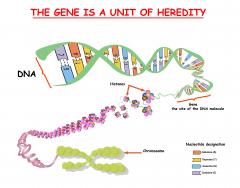Genetics
An understanding of general genetic principles is important when breeding for flock improvement. The University of Utah's Genetic Science Learning Center has an excellent website exploring the principles of genetics.

Every individual has two sets of chromosomes - one from the mother and one from the father. Each set contains a sex chromosome which is important in determining the gender of the animal. It is important to note, however, that genetic sex determination in birds (including poultry species) is very different from that of mammals (such as us), as shown below.
Genetics of sex determination in mammals versus birds:
|
MAMMALS (e.g., humans, cows, etc.) Male = XY Female = XX Males determine the sex of the offspring |
BIRDS (including all poultry species) Male = ZZ Female = ZW Females determine the sex of the offspring |
In mammals there are two possible sex-chromosomes - X and Y. Females have two X chromosomes (XX) while males have one of each (XY). Male mammals, therefore, determine the gender of the offspring. In birds, however, the two sex chromosomes are Z and W. The females are ZW and the males are ZZ. For birds, therefore, it is the female that determines the sex of the offspring.
Poultry genetics for pastured production (ATTRA)
The genetics for feather pattern, eggshell color, body confirmation, and other traits are controlled by different genes on different chromosomes of the chicken. A summary of the different genes on particular chromosomes can be found at the Coop.org website. There is also a chicken color calculator online.
